
How to Use Mini DC-DC 12-24V 3A to 2.5V 3.3V 5V 9V 12V: Examples, Pinouts, and Specs
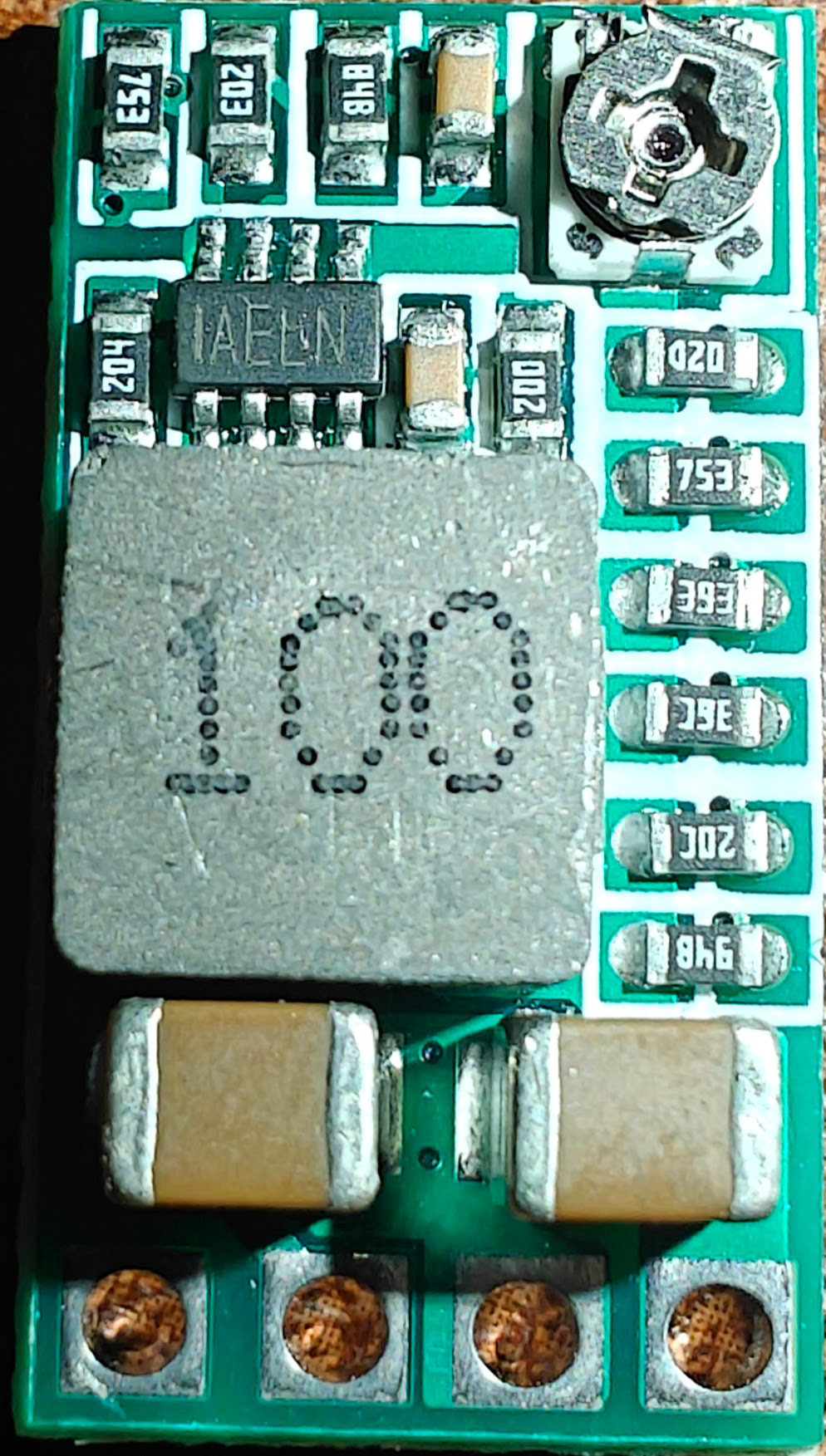
 Design with Mini DC-DC 12-24V 3A to 2.5V 3.3V 5V 9V 12V in Cirkit Designer
Design with Mini DC-DC 12-24V 3A to 2.5V 3.3V 5V 9V 12V in Cirkit DesignerIntroduction
The HiLetgo Mini DC-DC Converter (Part ID: B0CDWW4XHL) is a compact and efficient step-down voltage regulator designed to convert input voltages ranging from 12V to 24V into selectable output voltages of 2.5V, 3.3V, 5V, 9V, or 12V. With a maximum output current of 3A, this module is ideal for powering low-voltage devices such as microcontrollers, sensors, and other electronic components.
Explore Projects Built with Mini DC-DC 12-24V 3A to 2.5V 3.3V 5V 9V 12V
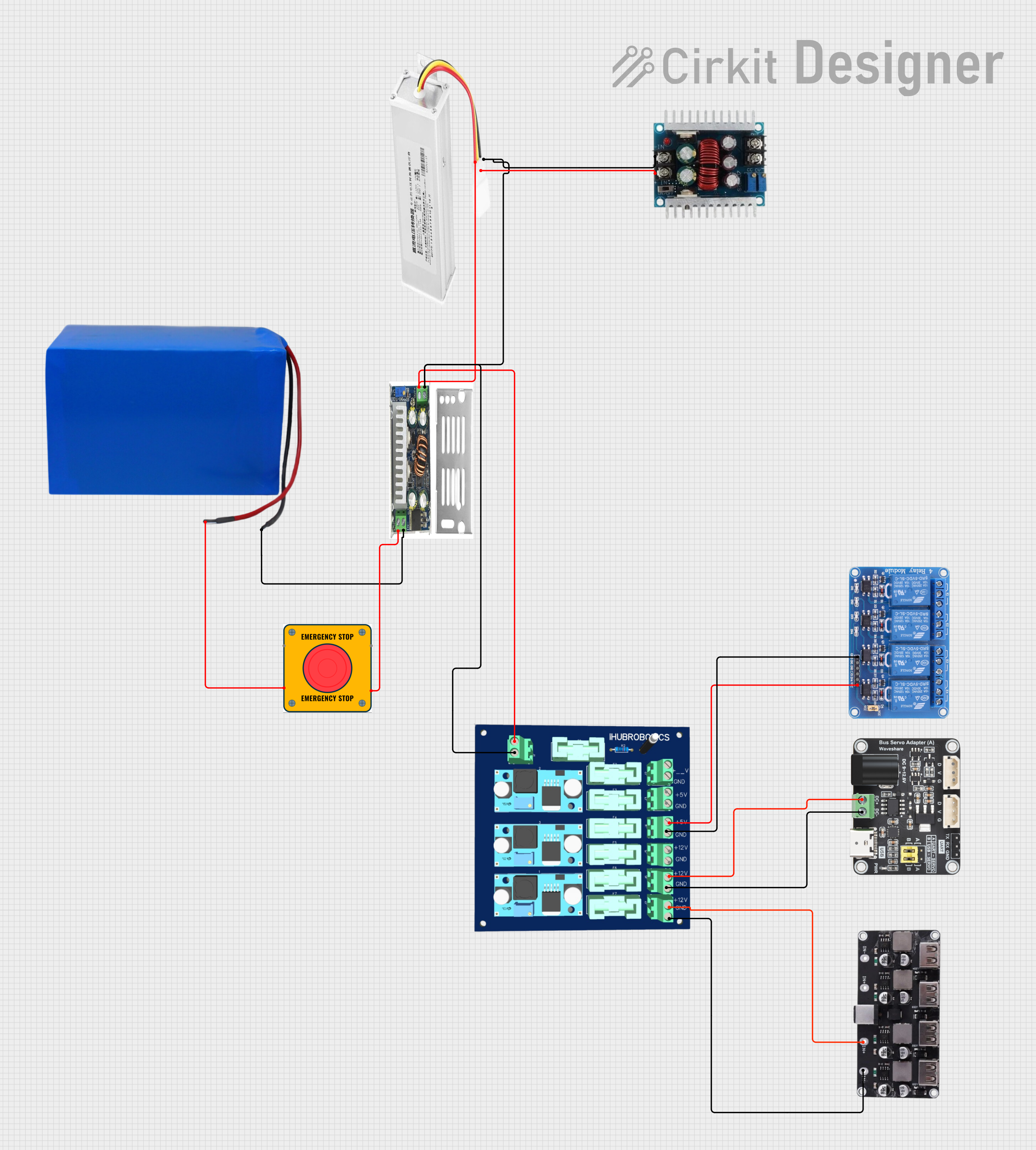
 Open Project in Cirkit Designer
Open Project in Cirkit Designer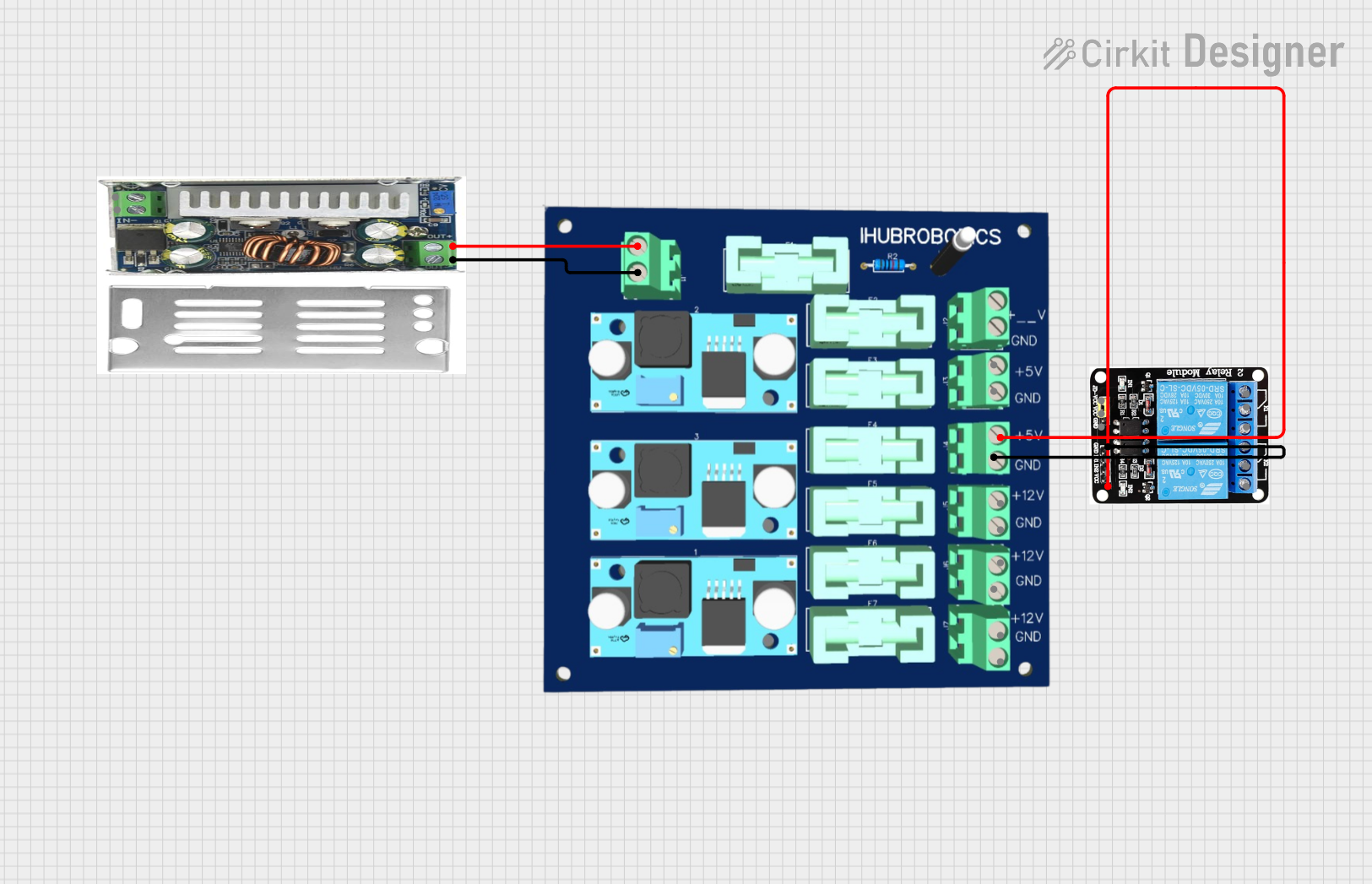
 Open Project in Cirkit Designer
Open Project in Cirkit Designer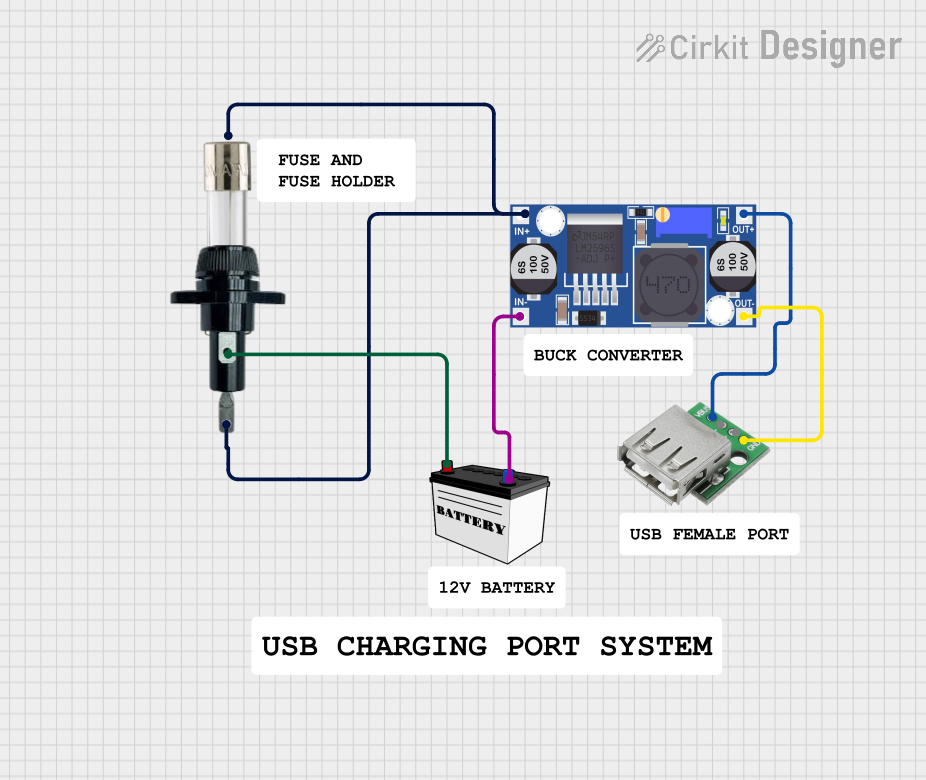
 Open Project in Cirkit Designer
Open Project in Cirkit Designer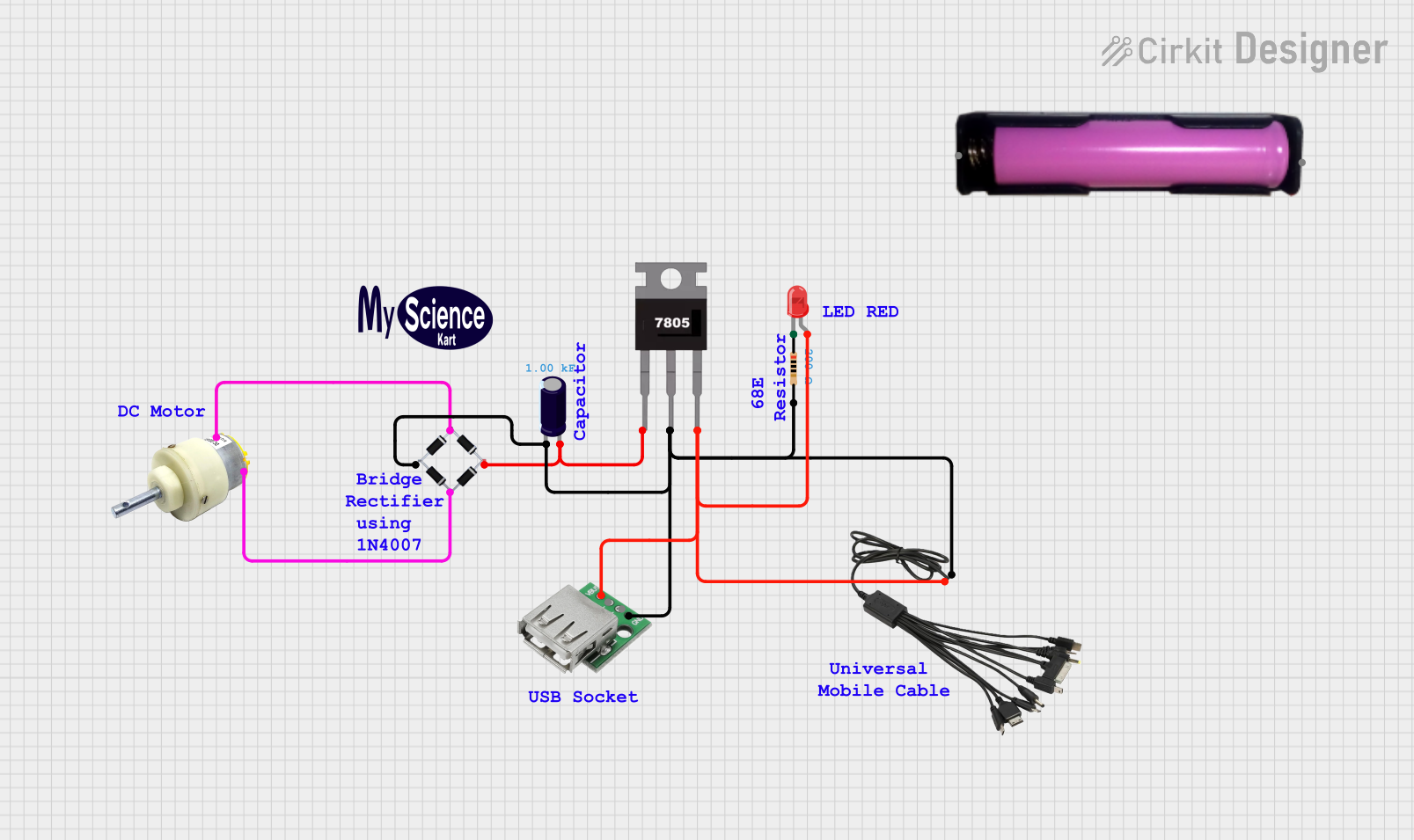
 Open Project in Cirkit Designer
Open Project in Cirkit DesignerExplore Projects Built with Mini DC-DC 12-24V 3A to 2.5V 3.3V 5V 9V 12V

 Open Project in Cirkit Designer
Open Project in Cirkit Designer
 Open Project in Cirkit Designer
Open Project in Cirkit Designer
 Open Project in Cirkit Designer
Open Project in Cirkit Designer
 Open Project in Cirkit Designer
Open Project in Cirkit DesignerCommon Applications and Use Cases
- Powering microcontrollers (e.g., Arduino, ESP32, Raspberry Pi)
- Supplying regulated voltage to sensors and modules
- Battery-powered systems requiring multiple voltage levels
- DIY electronics projects and prototyping
- Automotive electronics for powering low-voltage devices
Technical Specifications
Key Technical Details
| Parameter | Value |
|---|---|
| Input Voltage Range | 12V to 24V |
| Output Voltage Options | 2.5V, 3.3V, 5V, 9V, 12V (selectable) |
| Maximum Output Current | 3A |
| Efficiency | Up to 95% (depending on input/output ratio) |
| Operating Temperature | -40°C to +85°C |
| Dimensions | 22mm x 17mm x 4mm |
| Weight | ~5g |
Pin Configuration and Descriptions
| Pin Name | Description |
|---|---|
| VIN+ | Positive input voltage terminal (connect to 12-24V DC source) |
| VIN- | Negative input voltage terminal (connect to ground of the DC source) |
| VOUT+ | Positive output voltage terminal (connect to the load's positive terminal) |
| VOUT- | Negative output voltage terminal (connect to the load's ground terminal) |
| Voltage Selector | A small onboard switch or jumper to select the desired output voltage |
Usage Instructions
How to Use the Component in a Circuit
- Input Voltage Connection: Connect the input voltage source (12-24V DC) to the
VIN+andVIN-pins. Ensure the input voltage is within the specified range to avoid damage. - Output Voltage Selection: Use the onboard switch or jumper to select the desired output voltage (2.5V, 3.3V, 5V, 9V, or 12V). Refer to the module's markings for the correct settings.
- Output Voltage Connection: Connect the load to the
VOUT+andVOUT-pins. Ensure the load does not exceed the maximum current rating of 3A. - Power On: Once all connections are secure, power on the input voltage source. The module will regulate the output voltage to the selected level.
Important Considerations and Best Practices
- Heat Dissipation: At higher currents, the module may generate heat. Ensure adequate ventilation or use a heatsink if necessary.
- Input Voltage Range: Do not exceed the 24V input limit, as this may damage the module.
- Output Current Limit: Ensure the connected load does not draw more than 3A to prevent overheating or damage.
- Polarity: Double-check the polarity of the input and output connections to avoid short circuits or damage.
- Voltage Selection: Always confirm the selected output voltage before connecting sensitive devices.
Example: Using with an Arduino UNO
To power an Arduino UNO with 5V using this module:
- Set the output voltage to 5V using the onboard selector.
- Connect the module's
VOUT+to the Arduino's 5V pin andVOUT-to the GND pin. - Connect a 12V DC power source to the module's
VIN+andVIN-.
Here is an example Arduino sketch to blink an LED while powered by the module:
// Simple LED Blink Example
// Ensure the module is set to 5V output before powering the Arduino UNO.
const int ledPin = 13; // Built-in LED pin on Arduino UNO
void setup() {
pinMode(ledPin, OUTPUT); // Set LED pin as output
}
void loop() {
digitalWrite(ledPin, HIGH); // Turn the LED on
delay(1000); // Wait for 1 second
digitalWrite(ledPin, LOW); // Turn the LED off
delay(1000); // Wait for 1 second
}
Troubleshooting and FAQs
Common Issues and Solutions
No Output Voltage:
- Verify the input voltage is within the 12-24V range.
- Check all connections for proper polarity and secure contact.
- Ensure the output voltage selector is set correctly.
Overheating:
- Reduce the load current if it exceeds 3A.
- Improve ventilation or add a heatsink to the module.
Incorrect Output Voltage:
- Double-check the voltage selector setting.
- Measure the output voltage with a multimeter to confirm.
Module Not Working:
- Inspect for physical damage or burnt components.
- Ensure the input voltage polarity is correct.
FAQs
Q: Can this module be used with a 9V battery?
A: No, the input voltage must be between 12V and 24V. A 9V battery is insufficient.
Q: Can I use this module to power multiple devices simultaneously?
A: Yes, as long as the total current draw does not exceed 3A.
Q: Is the output voltage stable under varying loads?
A: Yes, the module is designed to provide a stable output voltage with high efficiency.
Q: Can I use this module in automotive applications?
A: Yes, it is suitable for automotive use, provided the input voltage is within the specified range.